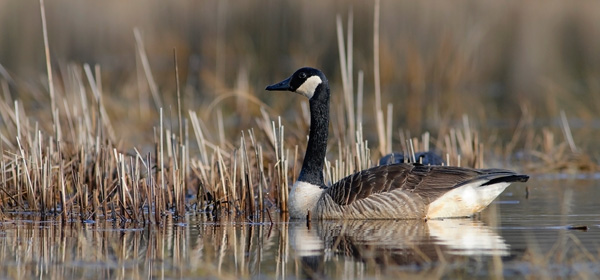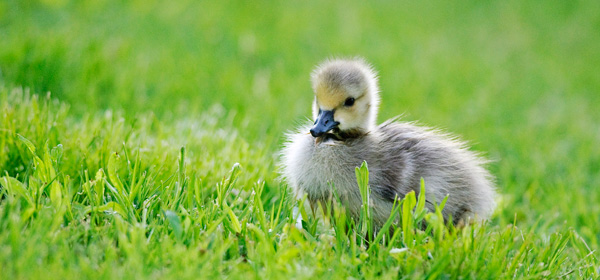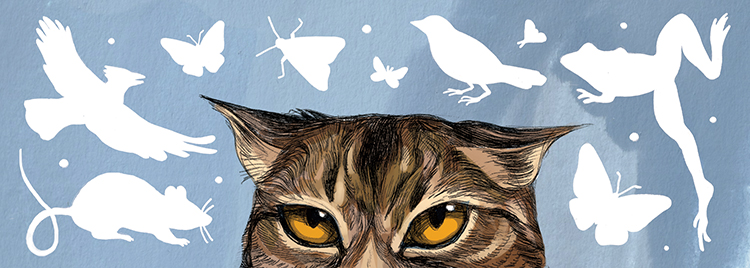 story by bernard brown | photos by jen britton and christian hunoldMy wife, Jen, adores Canada geese. She especially loves the fluffy goslings that graze alongside their parents throughout grassy Philadelphia, but she waves to the adults, too. Jen might be the only Philadelphian I’ve met who likes the geese, and, like anyone whose spouse holds a dangerously contrarian position, I am bound to publicly agree with her.
story by bernard brown | photos by jen britton and christian hunoldMy wife, Jen, adores Canada geese. She especially loves the fluffy goslings that graze alongside their parents throughout grassy Philadelphia, but she waves to the adults, too. Jen might be the only Philadelphian I’ve met who likes the geese, and, like anyone whose spouse holds a dangerously contrarian position, I am bound to publicly agree with her.
I will own up to cursing the geese when I step in their poop, and in this I am aligned with the rest of Philadelphia. This is not just an aesthetic problem. Tom Whitmer, Director of Natural Resources for Parks and Recreation, points out the disease potential of large quantities of goose feces. We’re talking a lot of poop, more than a pound per goose per day. Where they congregate along West River Drive and Kelly Drive, right near Water Department intake pipes, it totaled something like 14 tons per year before the city took action.
“In some of these areas you have nice mown lawns right up to the edge, and they just love that,” Whitmer notes. The city controls these resident geese largely through landscaping and public education campaigns. Geese are wary of high grass that could hide foxes or other predators, so letting the grass grow tall along the water can create a goose barrier. It doesn’t help when people feed the already plump and abundant waterfowl, hence the signs along MLK Drive telling us not to.
 As if tons of green, sloppy crap isn’t enough, dense goose populations tear up the landscape as well. A few weeks ago, I checked out the renovated Concourse Lake in Fairmont Park West. This used to be a decrepit pond surrounded by crumbling paths and retaining walls, lined with stinking muck, and home to hundreds of bullfrogs that stake out tiny territories of mud or lily pad and leap into the water with abrupt squeaks as you get too close. Herds of geese graze around Concourse Lake and challenge your right of way. On this trip, I rounded the pond on a newly paved path and was perplexed to see a complex network of tall fencing in the shallows on the west side of the pond. Witmer explains: As part of the renovation, Parks and Recreation had planted the shallows with plugs of native marsh plants. These plugs are apparently irresistible to geese. They don’t eat them, but they love to yank them out and throw them aside. So, if you’re going to establish a natural wetland in Philadelphia, you need to keep out the geese.
As if tons of green, sloppy crap isn’t enough, dense goose populations tear up the landscape as well. A few weeks ago, I checked out the renovated Concourse Lake in Fairmont Park West. This used to be a decrepit pond surrounded by crumbling paths and retaining walls, lined with stinking muck, and home to hundreds of bullfrogs that stake out tiny territories of mud or lily pad and leap into the water with abrupt squeaks as you get too close. Herds of geese graze around Concourse Lake and challenge your right of way. On this trip, I rounded the pond on a newly paved path and was perplexed to see a complex network of tall fencing in the shallows on the west side of the pond. Witmer explains: As part of the renovation, Parks and Recreation had planted the shallows with plugs of native marsh plants. These plugs are apparently irresistible to geese. They don’t eat them, but they love to yank them out and throw them aside. So, if you’re going to establish a natural wetland in Philadelphia, you need to keep out the geese.
Canada geese test the boundaries of “natural.” They are certainly native, but they have become bound to civilization, particularly to our mowed grassy expanses (a.k.a. lawns, parks, golf courses) and well-clipped shorelines. This is our doing.
Live decoys were the ancestors of our goose hordes, notes naturalist and environmental educator Tony Croasdale. These were wounded or feather-clipped geese that were used by hunters to trick free-flying geese into thinking that it was safe to land. This hunting practice has long been illegal, but the released decoys and their fluffy babies stayed put. “There are still migratory geese that leave our region in the summer and go up to Canada,” Croasdale notes. “The resident population is a purely human creation.” So, next time you step in the green poop, don’t blame the goose.
Bernard Brown is an amateur field herper, part-time bureaucrat and director of the PB&J Campaign (pbjcampaign.org), a movement focused on the benefits of eating lower on the food chain. Read about his forays into the natural world at phillyherping.blogspot.com.



